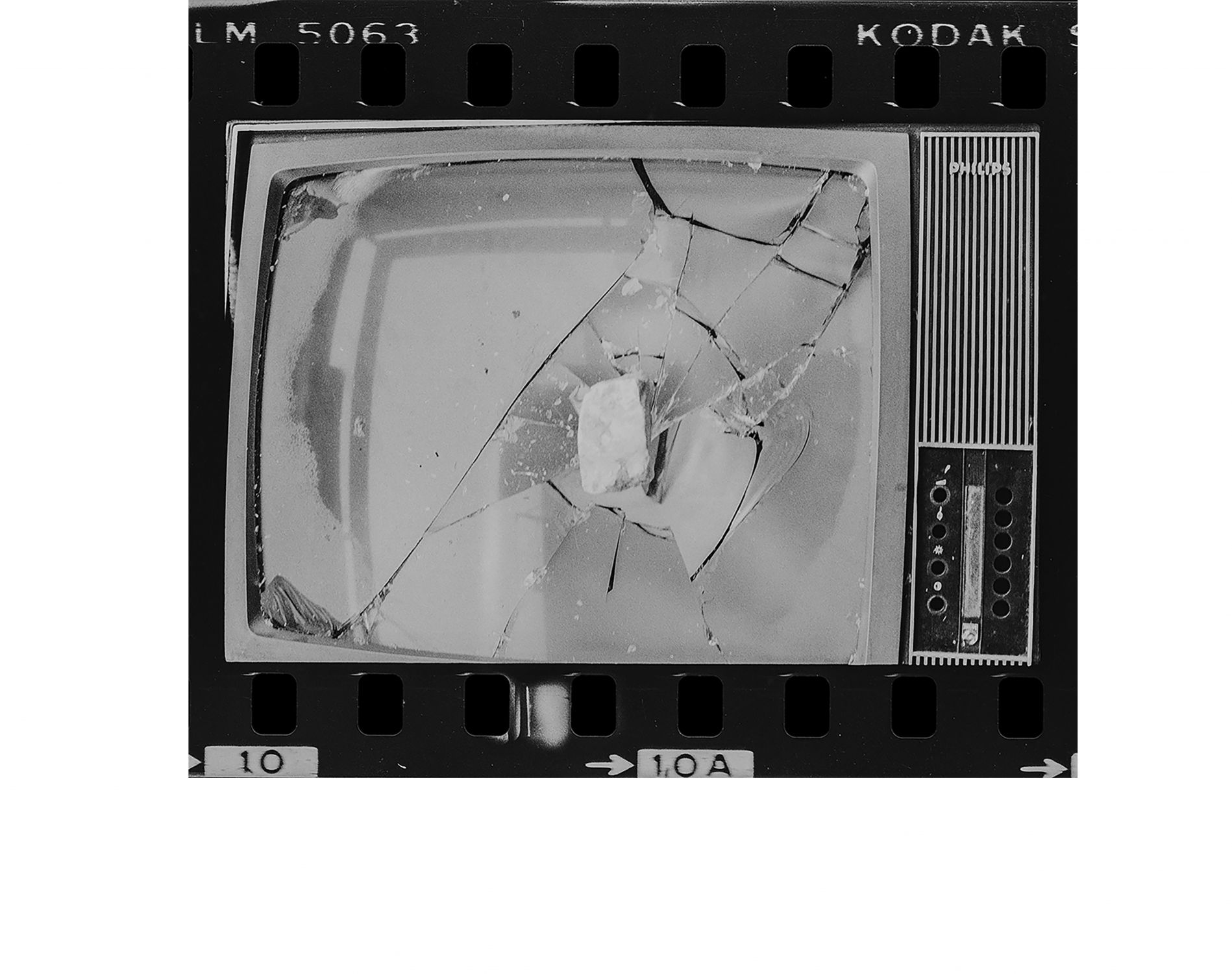Oh shit! Another year without a sign of a new attack on global capitalism
Fernando José Pereira1. – Theo Angelopoulos –
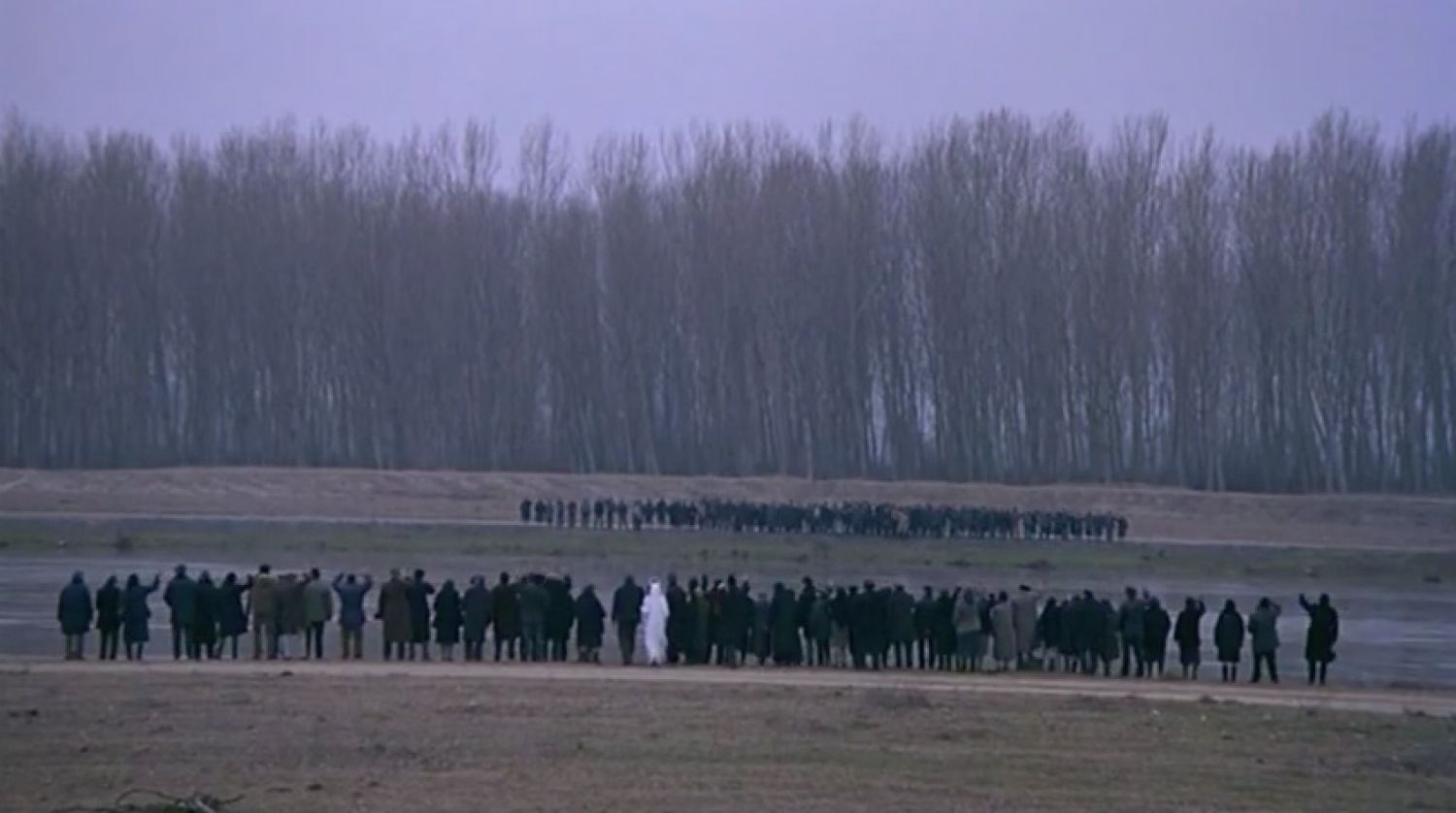
In one of the most beautiful plans in Theo Angelopoulos’ filmography a river embodies the slit/natural fracture that prevents contact. In the film The Suspended Step of the Stork all action happens in the border region between Greece and Turkey during a time of problematic and armed conflict that opposed them.
Paradoxically, two villages, one at each side of the frontier, whose inhabitants share a tradition of mutual relationship, celebrate another wedding among them: the groom from the Turkish side and the bride from the Greek side. They will never have the chance to meet, although they make a point in affirming the possibility of this impossibility. Angelopoulos’ plan shows us two groups of people, each at its margin of the river. Black prevails at the Turkish side; at the Greek one most people similarly dress in deep black, with the exception of the bride’s white dress. It’s a long shot, lengthy and almost static, a feature of Angelopoulos’ work. Suddenly the frontier slit, represented by the river, becomes the main character: all is still except for the water rapidly flowing from left to right. The river, thus, is an outpost where one can watch the impassable, the absolutely visible and yet laughably unattainable.
A filmmaker of space, Angelopoulos prefigures the frontier as an enunciation of imprisonment and inserts the natural fracture as a political metaphor. The slit that imprisons, that prevents contact, asserts its own power through the use it was deliberately given, which, as we know, is all but innocent in the geopolitical determinations that promote territories’ division.
2. Reykjanes
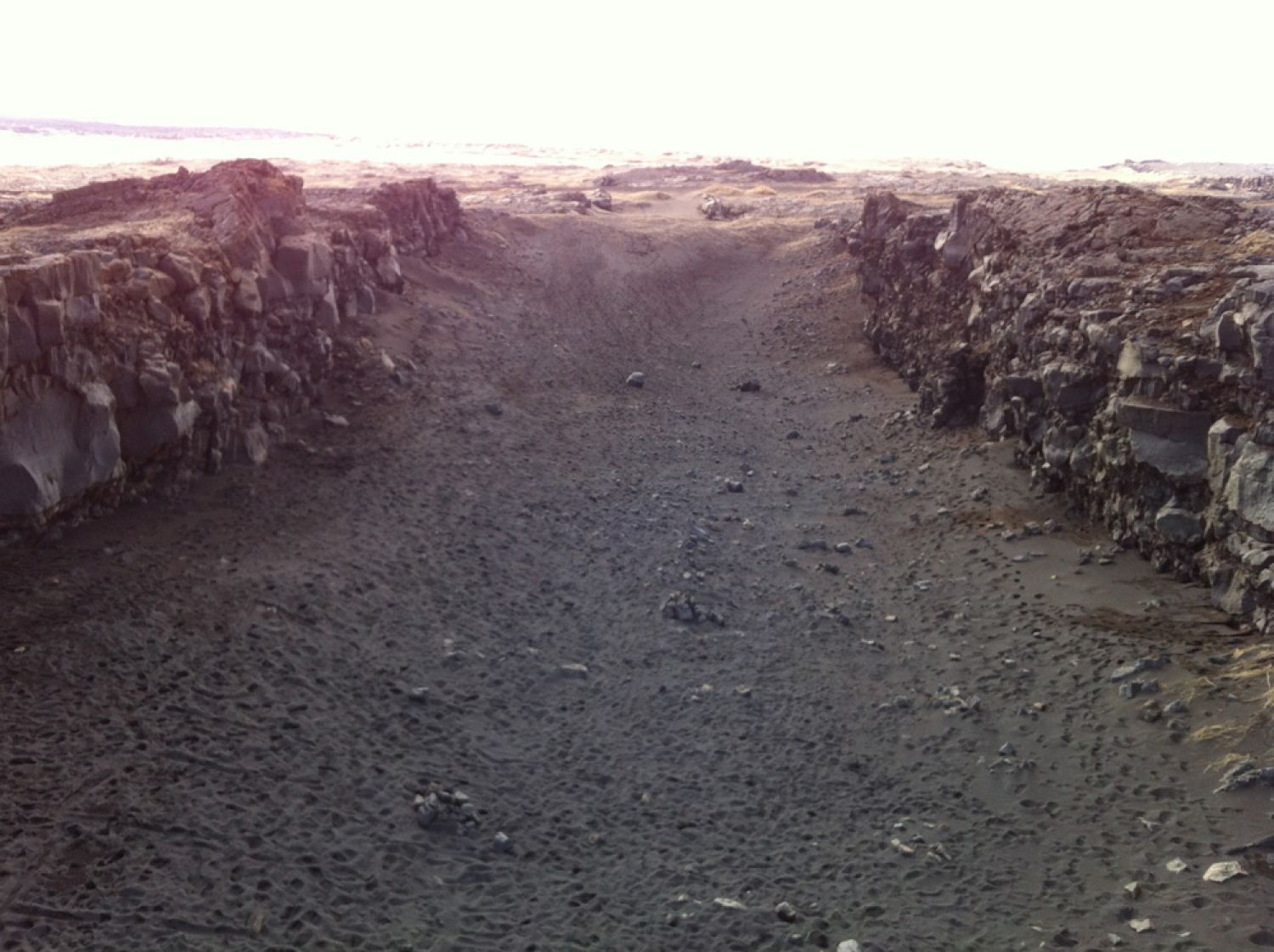
Natural topographies were always put at use in order to make frontiers visible: mountains, rivers, seas... This way they integrate in their apparent innocuousness and beauty high levels of political signification embodying the most diverse coding structures of impossibility. The empty significant which is the frontier needs these demonstrations of the visible and the intangible to embody itself as a political interstice between an inside and an outside.
And yet other frontiers exist which, despite strongly determining the world’s political organization, as we know it, constitute another kind of border relationship: the slits that form in the vicinity of tectonic plates enhance the current stability of the planet, simultaneously creating, in opposition to human built frontiers, turbulence zones which affirm themselves as necessary escapes to our own existence. Dangerous zones, then. Not only tellurically but as political metaphor as well.
The territory of Iceland is one of a few places in the world where this condition can be tried since the slit that separates the eurasian plate from the american plate is visible with bare eyes. It’s a violent fracture which is found in constant mutation and that, among other things, determines the existence of a vast network of active volcanoes aggregated to it. Thus the Icelandic territory is still a landscape in progress, with the undetermined features duly associated to it.
The slit that cuts in half this northern island introduces a peculiarity that exceeds political geography: two distinct continental plates are found in the same country. Therefore this small nation poses as a kind of possible metaphor of the agambenian concept of potency of impotence, i.e., a population of 300,000 people of a mainly inhospitable territory has already been capable of directly interfering with the absolute power of contemporary transnational capitalism. Thus the importance and urgency in understanding this almost dadaist possibility of political resistance in a time of seemingly absolute passivity and positivity. Thus, again, the interest and increasing protagonism that this country has been having in the development of my work.
3. Eyjafjallajökull
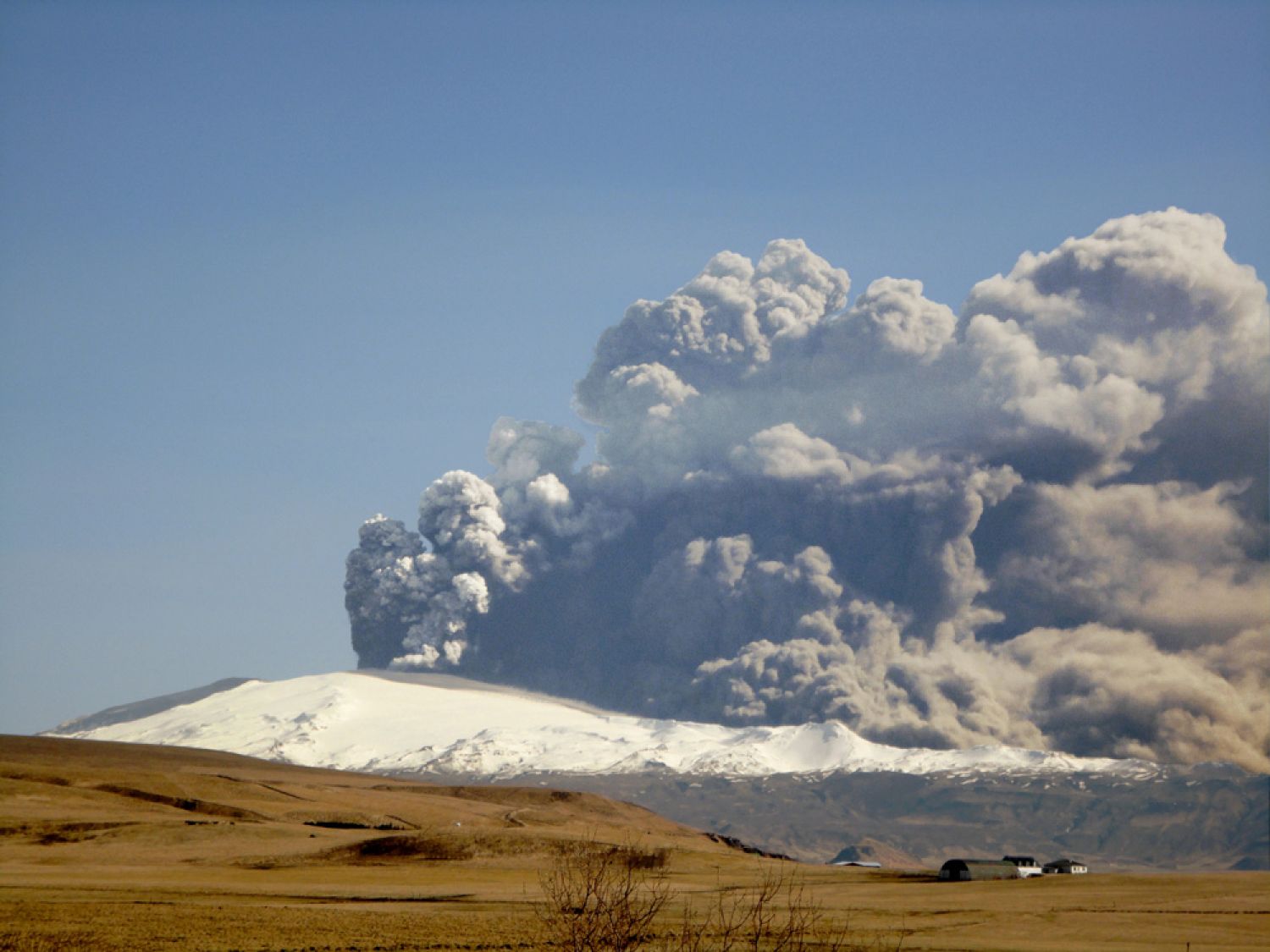
In her book The Shock Doctrine, Naomi Klein concludes that it is necessary to have people becoming resilient and prepared to the next shock which will be explored by global capitalism. This, as the author proves, won’t restrain it to obscenely explore natural catastrophes on its own benefit, as were the cases with the Asian Tsunami or Katrina in the US.
In 2010 a small volcano in Iceland erupted with unexpected potency and magnitude. Eyjafjallajökull is integrated in the continuous line of a vast network of other volcanoes that follow the slit existent within the eurasian and American tectonic plates. Like some other Icelandic volcanoes it has a particularity: it’s submerged in a thick and deep ice layer which causes its eruption to release a huge ash cloud. In the case of the Eyjafjallajökull, the ash cloud reached such proportions that it was able to reach continental Europe, causing a deep disruption on the continent’s life. Which in itself would not be a small matter. One eruption of the same kind but of bigger proportions spread death through the whole European continent in the 18th century. The recent eruption had a more disruptive dimension since it interfered with one of the main structural lines of global capitalism: air routes.
Beyond all demonstrations, beyond all possibilities of political alternatives, a small volcano of a small country in the middle of the Northern Atlantic paralyzed the global totalization for several weeks. It’s an unexpected achievement but one which deserves our admiration.
Here, the rupture was potentiated by the geological crack.
4. Hekla
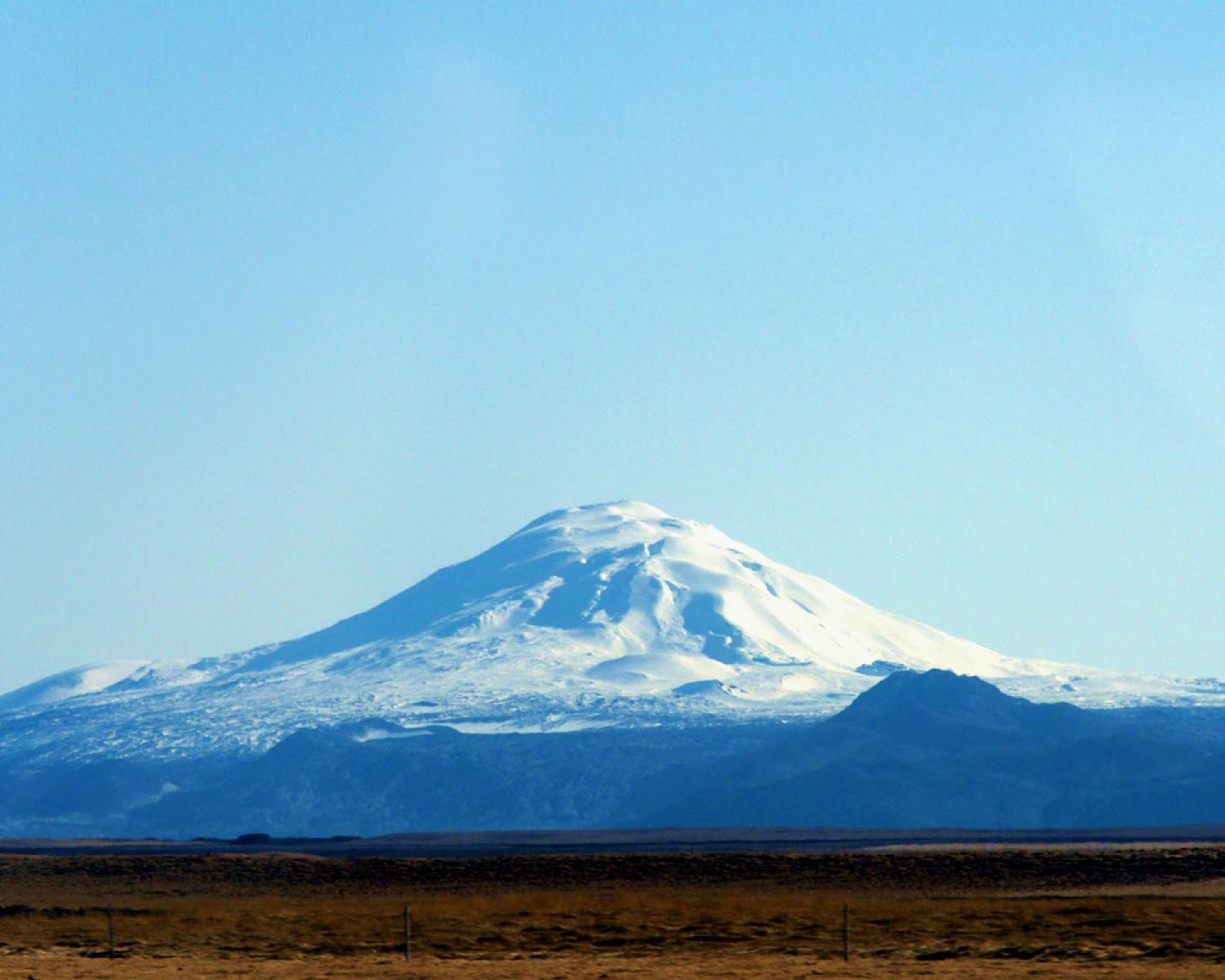
Hekla is one of the most active volcanoes in Iceland. It records an impressive eruption regularity since ancient times. More recently it had eruptions every 10 years: 1981, 1991, 2000, and, despite some threats in 2010 and 2011, it hadn’t any other eruption since then. However, in Iceland, people stay alert and waiting.
There is, therefore, a delay relatively to its regular periodicity. This volcano is intimately related to the tectonic crack that crosses all Icelandic territory and, contrarily to other volcanoes, its crater is not filled with ice. Observations done during the last eruptions allowed to discover that only 7 minutes elapse between serious warnings that something is going to happen (earthquakes with very short delays and increasing potency) and the eruption.
Statistically Hekla will be the next volcano to suffer a huge eruption. As we know, statistics often fail and reality has shown other volcanoes erupting meanwhile, with Bardarbunga being the last one to wake during the Summer of 2014. However, its eruption didn’t take place in the main caldera, having instead occurred in a fissure located 24 miles from it, named Holuhraun.
On November 2012, still in the aftermath of Eyjafjallajökull’s eruption and its disruptive power, I decided to benefit from the latest technological innovations. Surveillance through cameras evolved in a curious way. It started on very problematic terms with people: the beginning of the century’s very vocal debate about the installation of surveillance cameras in cities is a live testimony of this. Suddenly and stealthily, thousands of cameras showed up in the Web with no surveilling purpose (and yet…). The main objective is now to divulge, to make it possible for people to access places remotely, in an ambitioned digital logic of instantaneity. The task is fulfilled by the so called webcams. Following the core of this logic, and after the huge success of the live broadcast of Eyjafjallajökull’s eruption by webcams, a telecom decided to widen its intervention range to other country’s spots, from places of touristic interest to Hekla.
Based on Hekla’s webcam I decided to create an artwork with a double condition: on one hand, to contradict the instantaneity that these devices enable and realize solely an image a day during a whole year. Always the same image, the same still plan, accompanying a time expected to be condensed, every day of the 365 days of a year. It’s no accident that this is one of the fundamental premises of this project. Time features nowadays as one of the most politicized dimensions a work of art can contain: the refusal of instantaneity in favor of a notion of time considered obsolete is an option that encloses a high degree of negativity in view of the temporally compressed reality of our days. This obsolete relationship with time allows a dimension that I want for my artworks and which I call active contemplation[1].
The other condition present in the artwork is utopia. The daily following of the volcano's life in the always present expectancy of watching the longed for (politically and metaphorically) happening. Last year nothing happened after 365 images. The work, though, endured, affirming itself as a testimony of that time, and the utopia remains as well. The title found for this artwork is: Oh shit! Another year without any sign of another attack on global capitalism.
5. Utopia
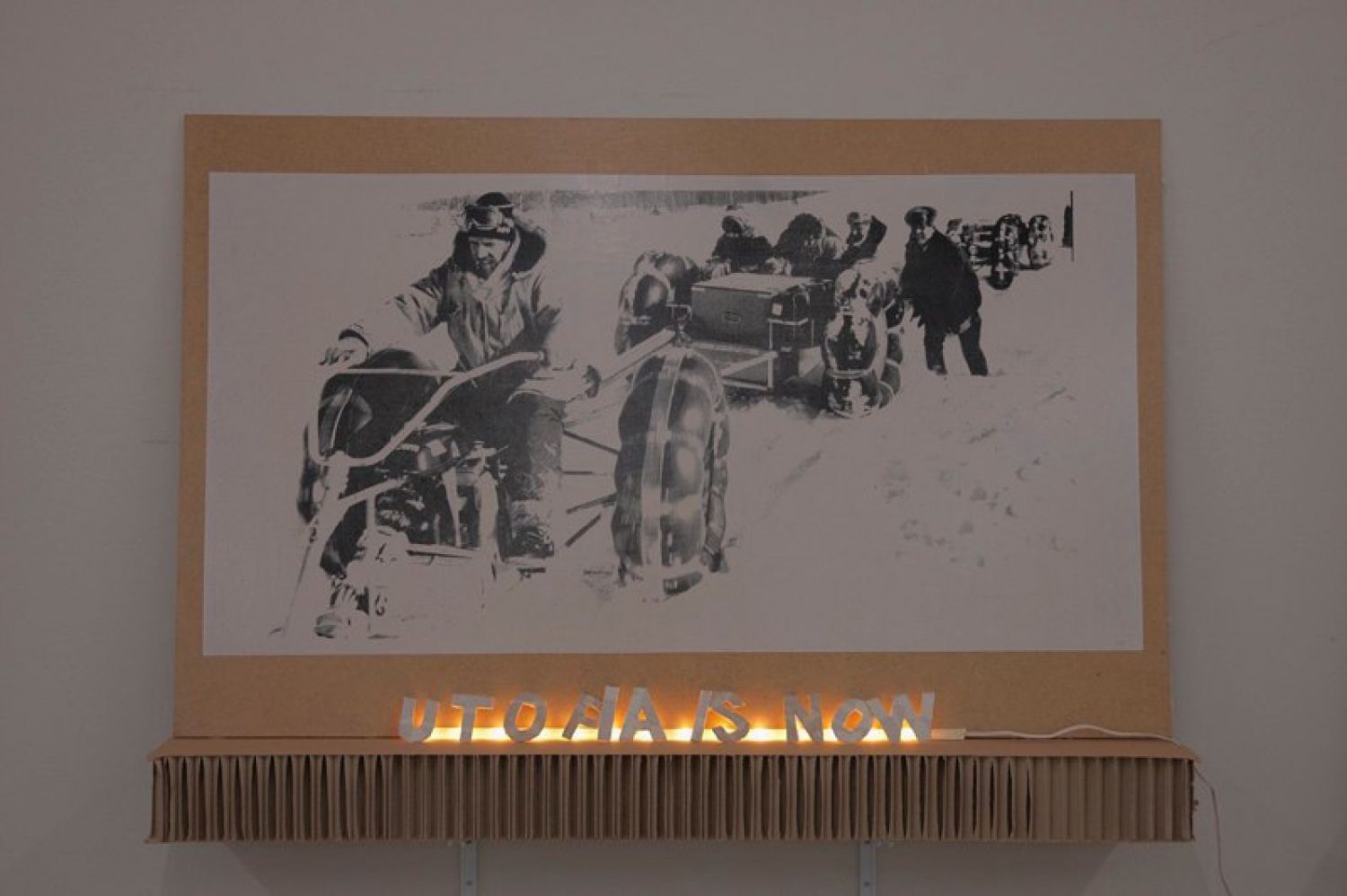
In 2005 I decided to share with the audience my interest in the idea of utopia, through an exhibition entitled Porque é que as utopias são sempre da Razão e nunca das razões?[2]. Such interest integrates the scope of the desiring impulse. Reason with capital ‘R’ falls naturally and transforms, thus, in reasons with lowercase ‘r’ which are nonetheless of the most interest. Art is an open desiring possibility and its production a gesture that I understand as a utopia in the light of this argument.
Utopia presents itself, accordingly to this perspective, as a theoretical possibility of surmounting the compulsory entropy that we are subject to by the totalizing condition which we are facing.
I locate utopia in the field of the possibilities opened by desire.
Thus, from the multiple reasons presented as possibility for a utopian gesture, there are some that determine our greatest proximity. The artwork I bring here is loaded with this desiring condition. It’s impregnated with the metaphorical possibility of thinking from Nature. The tectonic flaw is, after all, the necessary impulse to the utopia thought born from the faire savoir of Art. And, in this particular case, the necessary impulse for a continuous desire of a new disruptive possibility, daily stated through a whole year.
Time and utopia, the double condition I referred above for the construction of the artwork, is, therefore, overcome through the potentiation of a new and unique possibility: Time is the utopia and the utopia is time. The breach is now the desiring device.
The problem of Time manifests itself nowadays with vitality that only a few prophesied years ago. The postmodern voracity of space totalization relegated time to its maximum compression, meaning, to the smallest category of its digitalization. There is also a kind of fracture/breach that separates digital time from “our” time. The global totalization presented itself, first of all, as the winner of a sort of battle against Time, and for that reason it introduced the concept of history ending. End of all utopias to be consecrated on a similar notion of future ideal, i.e., that would follow historical time. The breach, again.
It was repeated to exhaustion that late capitalism reality and its way of acting based on the market's logic wouldn’t need time and, even less, beliefs built on a relationship established with Time. Time became operative, i.e., needed for the various flows to circulate at the increasingly faster speeds demanded by global totalization and, for that very reason, it was compressed by digitalization to measures that we are not able to capture.
Utopia is a breach that separates desire from pragmatism. As in the Icelandic tectonic flaw the constant turbulence between these two antagonistic possibilities enable the embodiment of positions maintaining a certain variable equidistance. As for what concerns me I surely know on which side of the breach I will stand.
6. Oh shit! Another year without any sign of another attack on global capitalism*
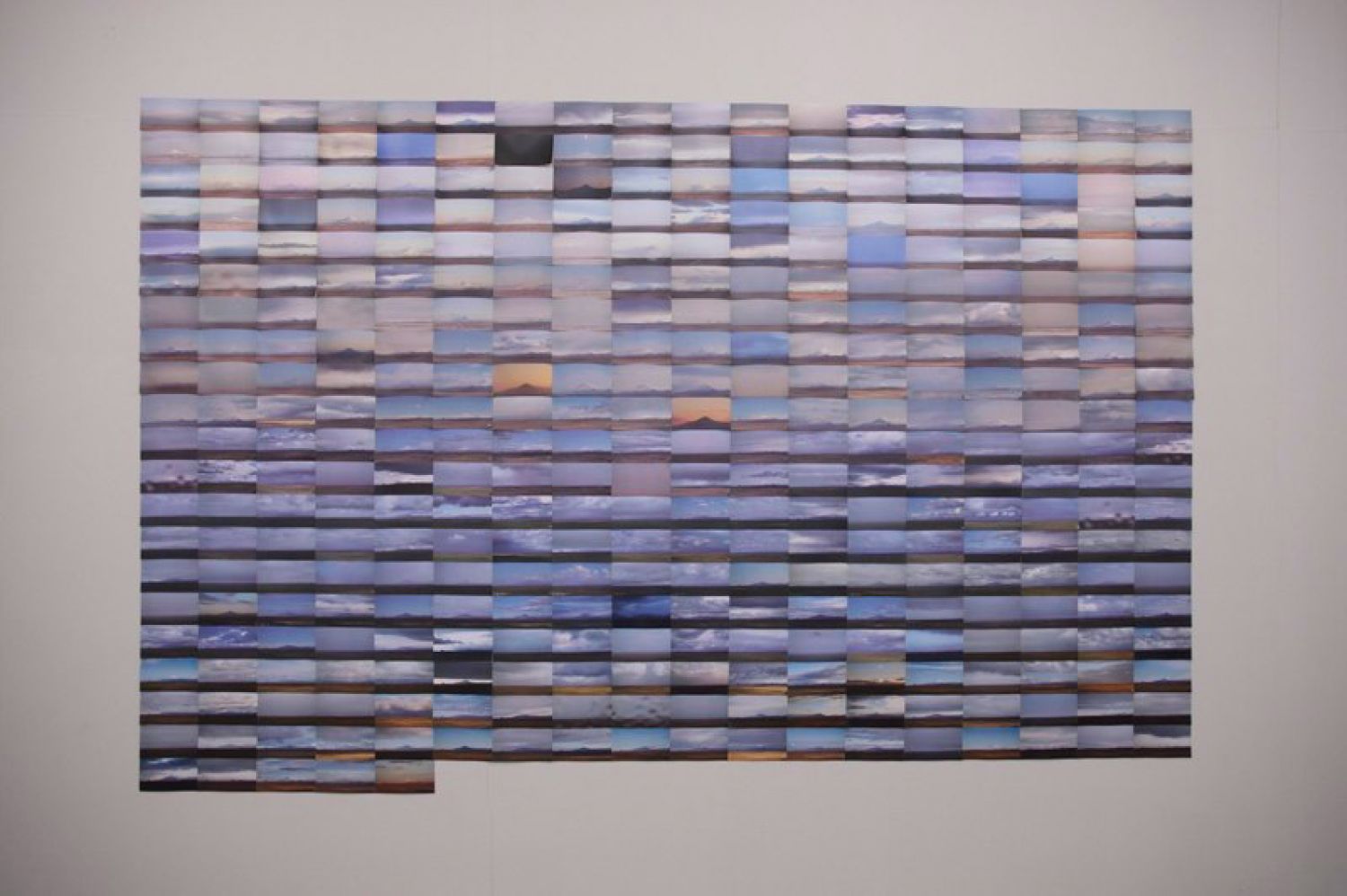
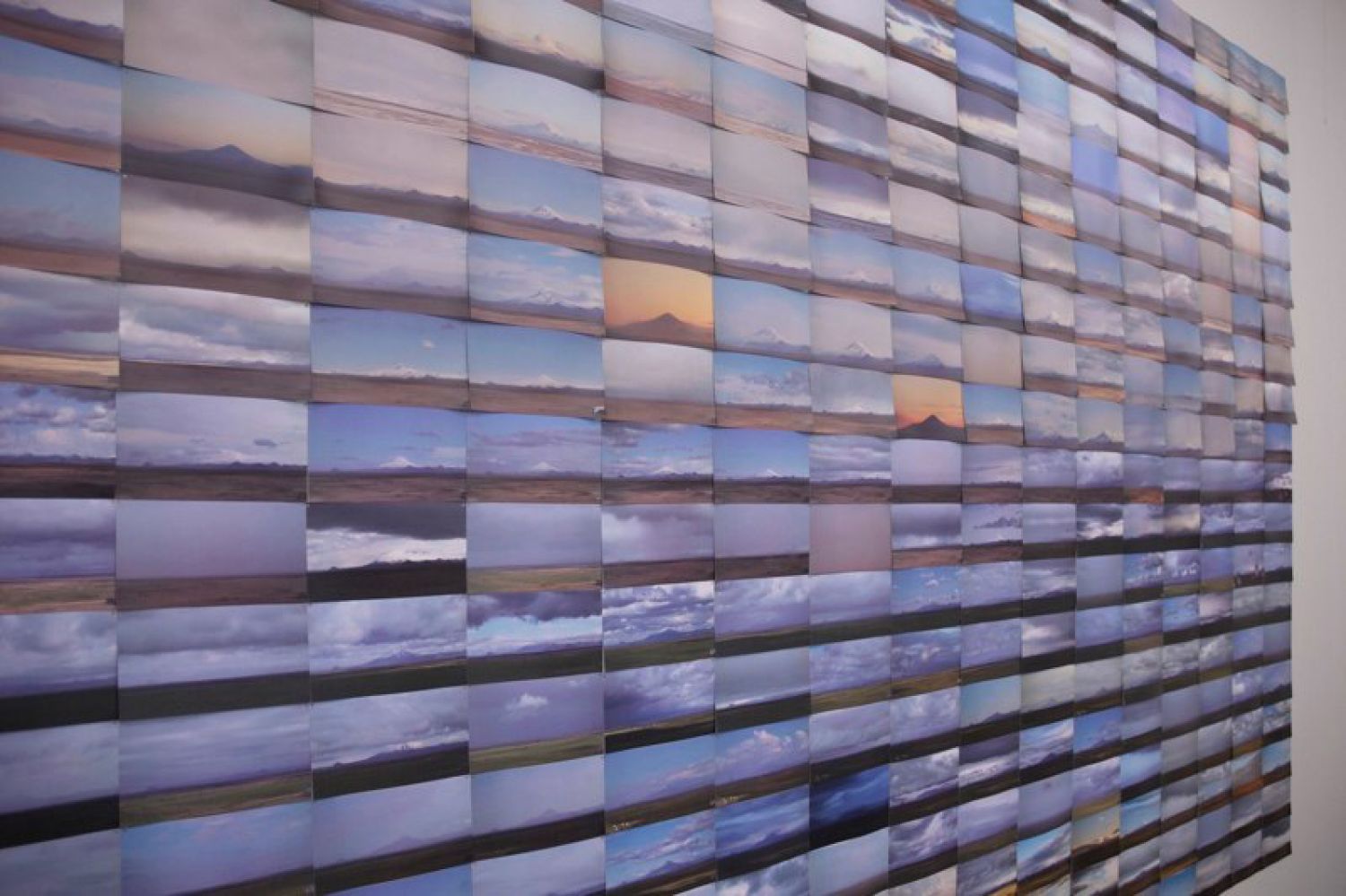
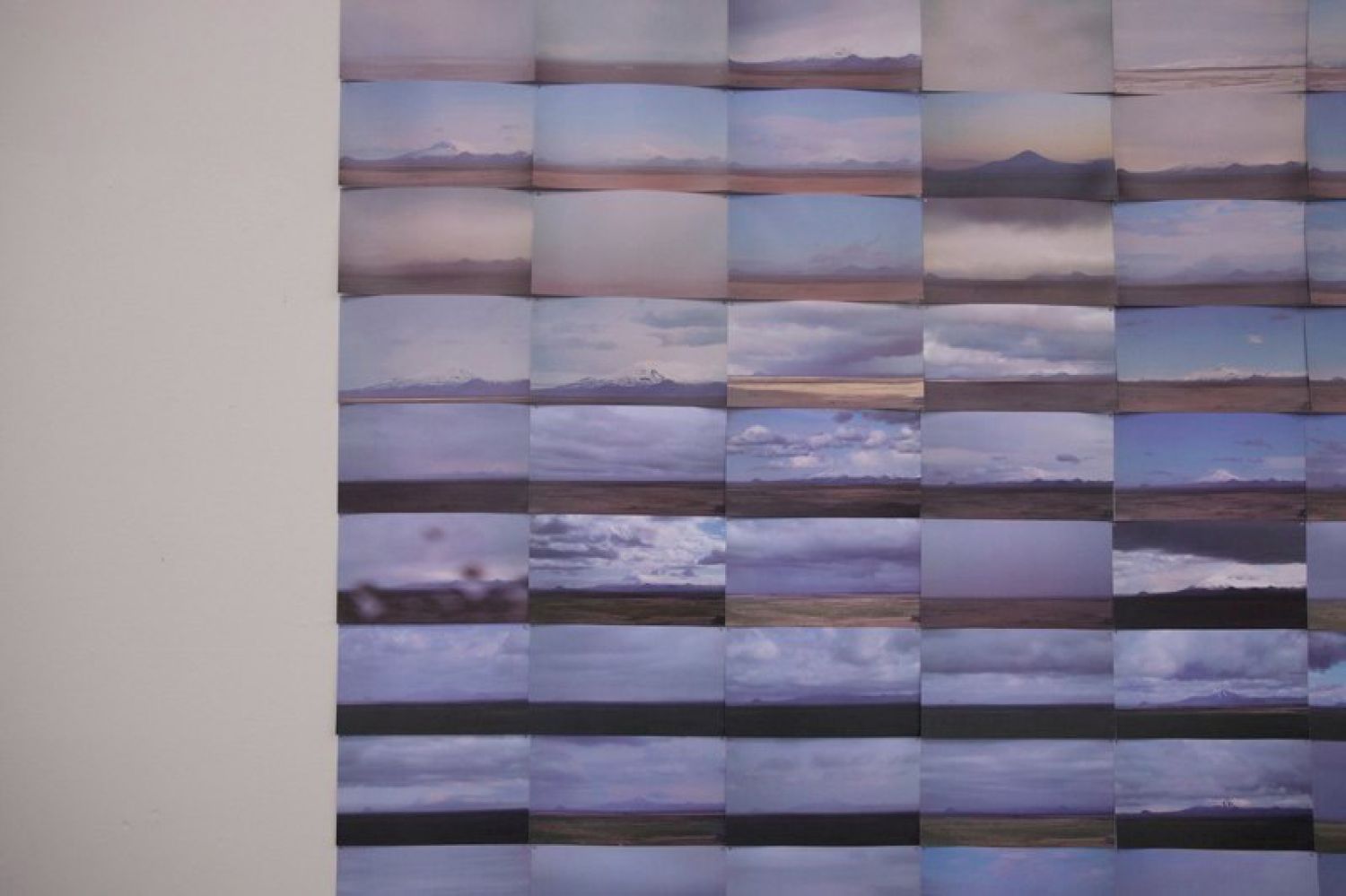
* All artwork images were extracted from the exhibition The artist as Arctic explorer that happened at C.A.A.A. at Guimarães, Portugal in 2013
Footnotes
- ^ Our time consumes time in a fast and merciless way and, maybe due to that reason, every day we have less time to have time. The change that is being created in contemporary temporality namely through the image cascade in which we are literally immersed generated a conceptual inversion on what deserved attention: being still potentiates the action. This kind of radical passivity is widely experienced in the videographic resource of image contemplation. The contemplation I propose here goes through the temporal adjustment to the act of thinking and, as we all know, this reflective act takes time. Making time needed as a determining factor for acting we are creating the possibility for a new way of observing: active contemplation. This means, a possibility of inserting the attention factor in the scope of image consumption, i.e, transforming dromology’s superficial drift in this strange investment to our time that is stopping.The above thoughts exhibited appeared unexpectedly in 2005, in the search of a title for a video. I entitled that video para-agem since I found this weird and paradoxical coexistence in the word «paragem» from the verb «parar» and from the verb «agir» (TN: in Portuguese «paragem» means stop; the author noticed in that word the coexistence of two verbs: «parar», which means to stop and «agir», which means to act – in English it would be the «act of stopping», or the consequence of that act).
- ^ TN: Why do utopias always belong to Reason and never to reasons?
